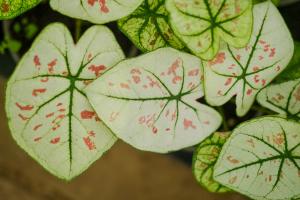How Often Should I Water My Indoor Elephant Ear Plant?
The elephant ear plant, also known as Colocasia, is a popular tropical plant that is grown for its large, heart-shaped leaves. This plant can be grown indoors and can add a touch of exotic beauty to any living space. However, it is important to know how to water this plant properly to ensure that it thrives. In this article, we will discuss how often you should water your indoor elephant ear plant.
Understanding the Elephant Ear Plant's Watering Needs
Elephant ear plants require consistent, even moisture to thrive. These plants prefer moist soil, but will not tolerate standing water or overly soggy soil. On the other hand, underwatering an elephant ear plant can lead to wilting and a general lack of vigor. Proper watering is essential to maintaining the health and beauty of your indoor elephant ear plant.
Factors to Consider
Several factors can impact how often you should water your elephant ear plant. These include the plant size, the pot size, and the environmental conditions in your home. Generally, elephant ear plants that are smaller or grown in smaller pots will require more frequent watering than larger plants or those grown in larger pots. Similarly, plants that are exposed to bright, direct sunlight or are grown in areas with low humidity may require more frequent watering than those grown in shadier, more humid areas.
Watering Frequency
So, how often should you water your indoor elephant ear plant? As a general rule, you should water your plant once per week, but this frequency can vary depending on the factors we mentioned above. To determine if your plant needs water, check the soil with your finger to assess moisture levels. If the soil feels dry and crumbly, it's time to water. If it feels moist or spongy, wait a few days before checking again.
It's important to note that overwatering can be just as detrimental to your elephant ear plant as underwatering. If you notice the plant's leaves turning yellow or brown and wilting, it may be a sign that you are overwatering. In this case, reduce the frequency of watering and allow the soil to dry out slightly between watering sessions.
Tips for Watering Your Elephant Ear Plant
Here are some tips for watering your indoor elephant ear plant:
Use a well-draining potting mix. Elephant ear plants require soil that drains well to prevent waterlogging.
Water from the bottom up. Fill a saucer with water and place the pot on top, allowing the soil to soak up the water through the drainage holes. This helps ensure even moisture throughout the root system.
Avoid getting water on the leaves. Elephant ear leaves are prone to fungal infections when they are wet, so it's best to avoid getting water on them during watering.
Use room-temperature water. Cold water can shock the roots of your plant, so it's best to use water that is at room temperature.
Conclusion
Proper watering is an essential component of caring for your indoor elephant ear plant. By understanding the plant's watering needs, assessing factors that can impact watering frequency, and following best practices for watering, you can help ensure that your plant thrives and adds beauty to your living space for years to come.

 how many times do yo...
how many times do yo... how many planted tre...
how many planted tre... how many pine trees ...
how many pine trees ... how many pecan trees...
how many pecan trees... how many plants comp...
how many plants comp... how many plants can ...
how many plants can ... how many plants and ...
how many plants and ... how many pepper plan...
how many pepper plan...































